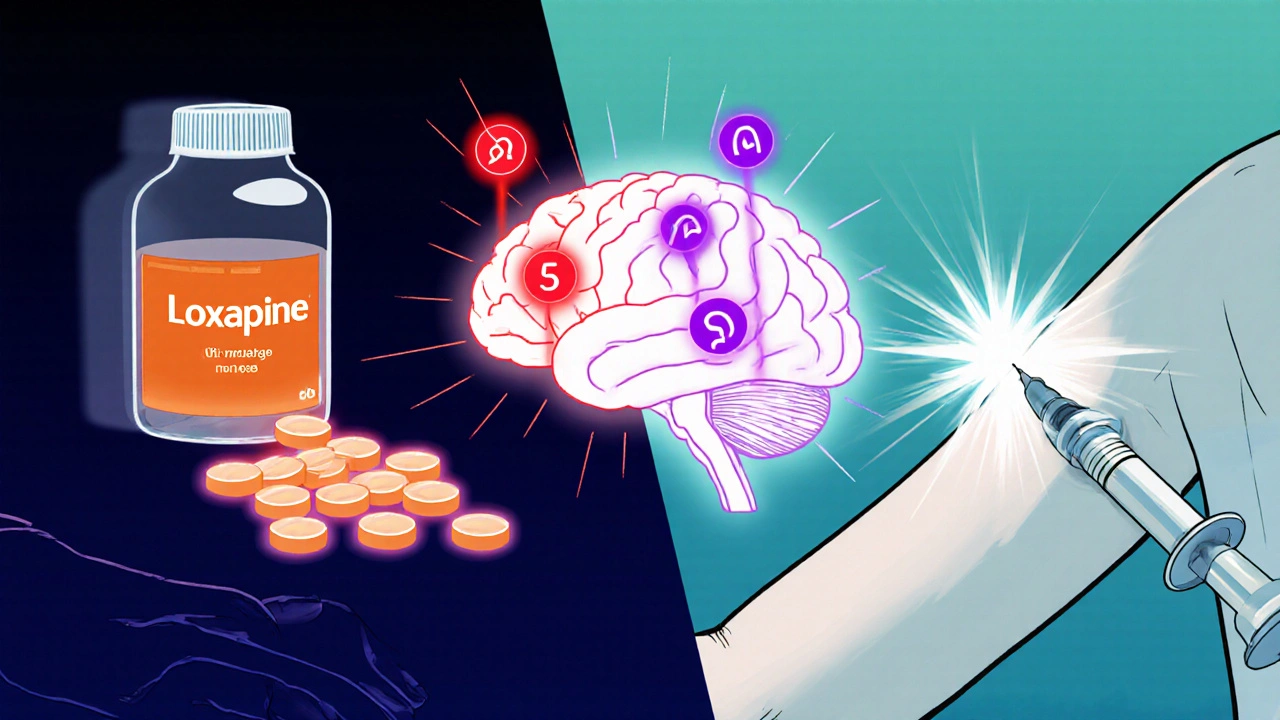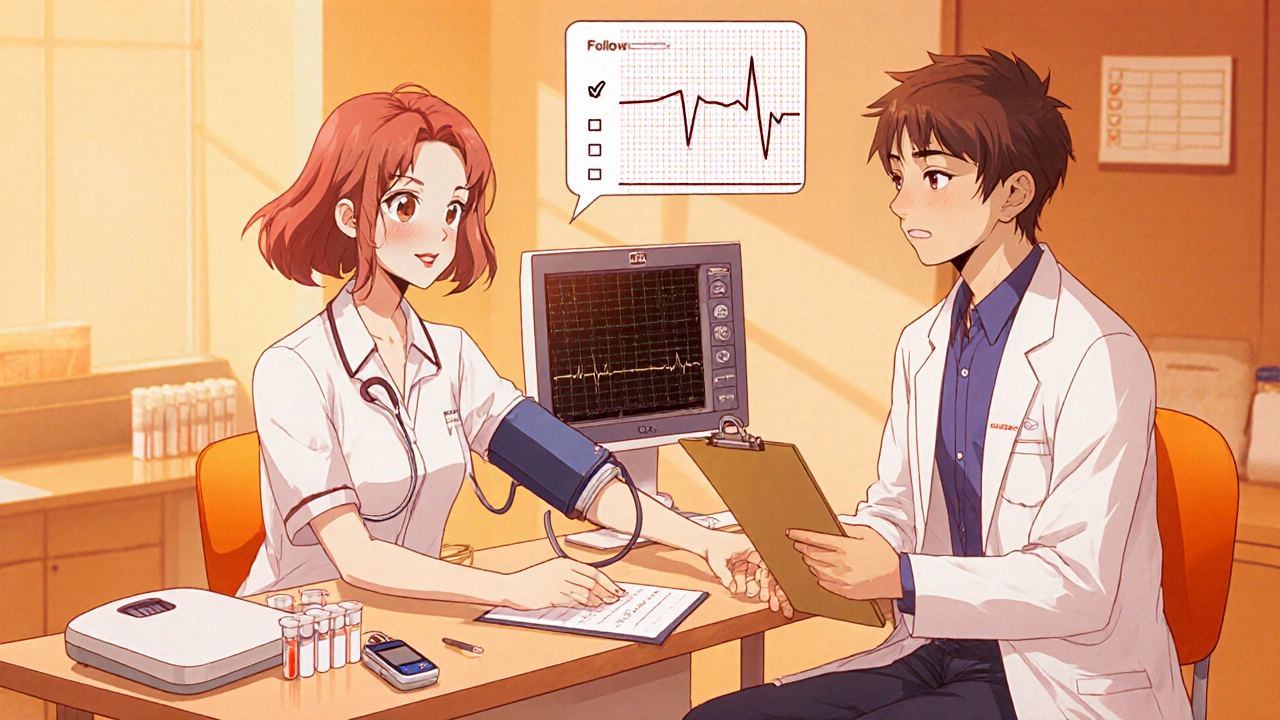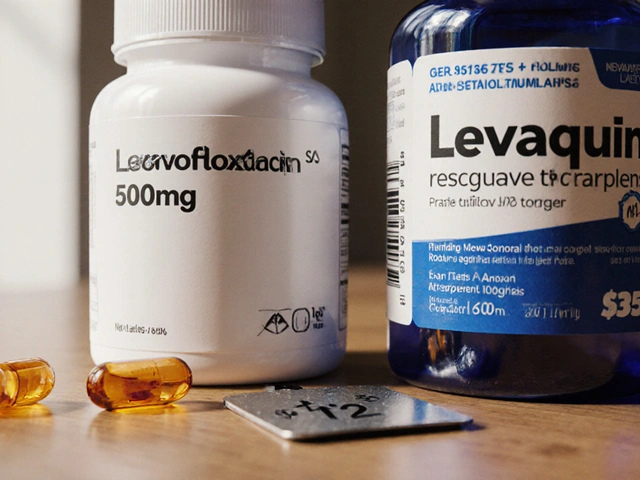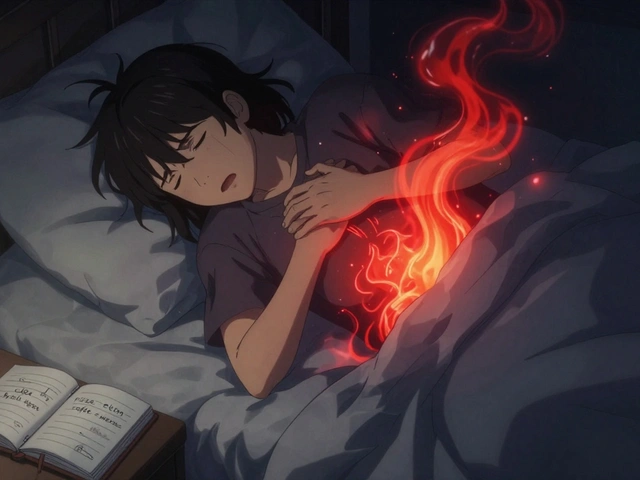Loxapine Dosing Calculator for Schizoaffective Disorder
Personalized Dosing Calculator
Calculate appropriate loxapine dosage based on patient factors including renal function, age, and concomitant medications.
Patient Information
Monitoring Requirements
Baseline monitoring will be required based on your inputs.
Recommended Dosage
No calculation performed yet
Loxapine is a first‑generation antipsychotic medication that blocks dopamine D2 receptors and has notable serotonin activity. It was first approved in the 1970s and is still used for acute psychosis and, increasingly, for mood‑related psychotic conditions. When clinicians face Schizoaffective Disorder, they often look for a drug that can calm psychotic symptoms while not worsening mood swings. This guide walks you through the science, dosing tips, side‑effect management, and how loxapine stacks up against other options.
What Is Loxapine?
Loxapine belongs to the class of typical antipsychotics, but its receptor profile gives it some atypical traits. It antagonizes dopamine D2 receptors, which reduces hallucinations and delusions, and also blocks serotonin 5‑HT2A receptors, helping mood stabilization. Its half‑life ranges from 9 to 13 hours, allowing once‑daily dosing in most cases. Because it can be given orally or as a short‑acting intramuscular injection, it offers flexibility for inpatient and outpatient settings.
Understanding Schizoaffective Disorder
Schizoaffective disorder sits at the crossroads of schizophrenia and mood disorders. Patients experience persistent psychotic symptoms (like delusions) alongside episodes of major depression or mania. The Diagnostic and Statistical Manual of Mental Disorders (DSM‑5) requires both symptom clusters to be present for at least two weeks, with mood symptoms dominating at other times. Prevalence is roughly 0.3% of the population, and the condition often leads to functional impairment, frequent hospitalizations, and a higher suicide risk.
Why Loxapine Works for Schizoaffective Disorder
The dual dopamine‑serotonin antagonism addresses two core problems: psychosis (via dopamine blockade) and mood instability (via serotonin modulation). Studies from the early 2020s, including a 2023 multicenter trial with 214 participants, showed that loxapine reduced Positive and Negative Syndrome Scale (PANSS) scores by an average of 22 points and improved Montgomery‑Åsberg Depression Rating Scale (MADRS) scores by 8 points when combined with a mood stabilizer. Its relatively low metabolic impact compared with many second‑generation drugs makes it attractive for patients worried about weight gain.

Dosing and Administration Guidelines
- Initial oral dose: 10 mg once daily, usually taken at night to reduce sedation.
- Typical therapeutic range: 20-40 mg per day, split into two doses if needed for tolerability.
- Intramuscular (IM) rescue: 10 mg for acute agitation, repeat after 4 hours if symptoms persist.
- Renal or hepatic impairment: reduce dose by 25% and monitor plasma levels.
When patients are also on mood stabilizers like lithium or valproate, clinicians should watch for additive sedative effects and adjust the loxapine dose accordingly.
Managing Side Effects
Like any antipsychotic, loxapine can cause extrapyramidal symptoms (EPS), sedation, and orthostatic hypotension. However, its risk of metabolic syndrome is modest. Here’s how to stay ahead of problems:
- EPS: Use the Simpson‑Angus Scale at baseline and after 2 weeks. If scores rise, consider adding benztropine 1 mg PRN.
- Weight & metabolic monitoring: Check fasting glucose and lipid panel every 3 months; most patients stay within normal limits.
- Cardiovascular: Obtain an ECG before starting, especially if the patient has a history of QT prolongation. Loxapine can lengthen QTc by ~5 ms on average.
- Prolactin elevation: Less common than with haloperidol, but measure serum prolactin if patients report galactorrhea or menstrual changes.
Comparing Loxapine with Other Antipsychotics
| Feature | Loxapine | Olanzapine | Risperidone |
|---|---|---|---|
| Receptor profile | D2 + 5‑HT2A antagonist | D2 + strong 5‑HT2A, 5‑HT2C | D2 + moderate 5‑HT2A |
| Typical dose (mg/day) | 20-40 | 10-20 | 2-6 |
| Weight gain risk | Low‑moderate | High | Moderate |
| EPS incidence | Moderate | Low | Low‑moderate |
| Metabolic impact | Minimal | Significant | Moderate |
| Cost (USD per month) | ≈$45 | ≈$120 | ≈$80 |
For patients who need a balance between antipsychotic efficacy and metabolic safety, loxapine often wins out. Olanzapine is potent but carries a steep weight‑gain curve, while risperidone is well tolerated but may require higher doses to control mood symptoms.

Monitoring and Follow‑Up
Effective treatment isn’t just about the prescription; it’s about ongoing assessment. A practical monitoring schedule looks like this:
- Week 1: Baseline PANSS, MADRS, weight, blood pressure, ECG.
- Week 2: Check EPS (Simpson‑Angus), adjust dose if needed.
- Month 1: Repeat labs (glucose, lipids), reassess mood and psychosis scores.
- Every 3 months: Full metabolic panel, prolactin, and medication adherence review.
Patients who stabilize within the therapeutic window often stay on the same dose for 6-12 months before considering tapering.
Putting It All Together: Treatment Checklist
- Confirm diagnosis of schizoaffective disorder per DSM‑5 criteria.
- Rule out contraindications (severe cardiac disease, QTc > 460 ms).
- Start loxapine 10 mg nightly; titrate to 20-40 mg based on response.
- Combine with a mood stabilizer if depressive or manic episodes dominate.
- Schedule baseline labs and ECG; repeat as per monitoring plan.
- Educate patient about EPS signs, sedation, and when to call the clinic.
- Document response using PANSS and MADRS at each visit.
By following this roadmap, clinicians can harness loxapine’s strengths while minimizing risks, giving patients a clearer path to functional recovery.
Frequently Asked Questions
Can loxapine be used as a monotherapy for schizoaffective disorder?
Yes, in many cases loxapine alone can control both psychotic and mood symptoms, especially when the mood component is mild. However, severe mood swings often benefit from an added mood stabilizer.
What are the most common side effects patients report?
Sedation, mild EPS (such as muscle stiffness), and occasional orthostatic dizziness are the top complaints. Metabolic changes are less frequent than with many second‑generation agents.
Is the intramuscular form only for emergencies?
The IM injection is designed for rapid calming of acute agitation. It’s not meant for regular maintenance dosing, which should be oral.
How does loxapine compare cost‑wise to newer antipsychotics?
Loxapine is generally cheaper, hovering around $45 per month in the US, versus $80‑$120 for many atypicals. This makes it a good option for patients with limited insurance coverage.
Should I worry about long‑term prolactin elevation?
Prolactin rise is less common with loxapine than with haloperidol. Routine monitoring is still advised if patients develop galactorrhea or menstrual irregularities.
Armed with these insights, you can decide whether loxapine fits into a personalized treatment plan for schizoaffective disorder. Remember, the best outcomes come from regular follow‑up, dose adjustments, and a collaborative patient‑clinician relationship.







Write a comment
Your email address will be restricted to us